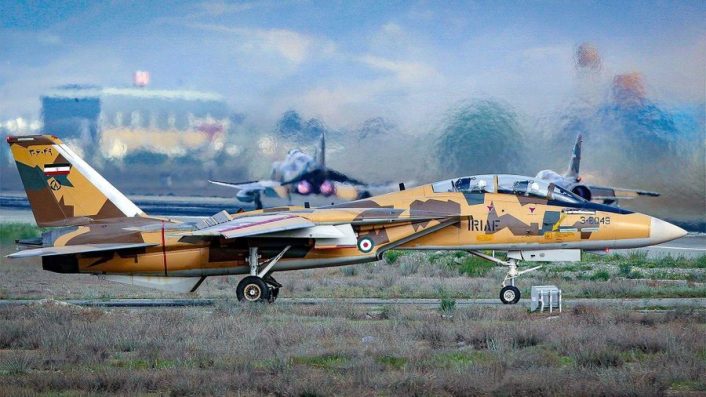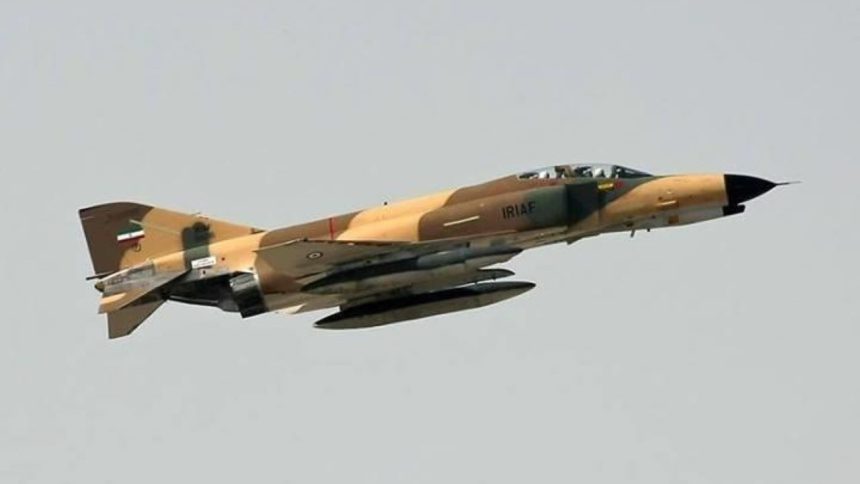This is not the first instance of Iran trying to get parts for its US-made aircraft, as other previous smuggling cases since the late 1990s had also involved North America-based Iranians.
The US DoJ (Department of Justice) charged a US-Iranian citizen for attempting to illegally export “four types of aerospace components” into Iran, some of them meant for the McDonnell Douglas F-4 Phantom II. According to the DoJ, Jeffrey Nader, associated with the California-based company Pro Aero Capital, was trying to smuggle nearly three dozen of such aircraft components since early-2023.
Nader falsely identified himself and Pro Aero Capital as the end-users of the parts and upon acquiring the parts, attempted to send them to his business associates in Iran by transshipping them through the UAE (United Arab Emirates). “The items discussed in the indictment, however, were detained by a Special Agent with the Department of Commerce, and none were successfully exported from the United States,” the DoJ said in a statement.
“This action demonstrates the Justice Department’s commitment to keeping military-grade equipment out of the hands of the Iranian regime,” said Assistant Attorney General Matthew G. Olsen of the Justice Department’s National Security Division. “We will aggressively investigate, disrupt, and hold accountable criminal networks that supply sensitive technology to hostile and repressive governments in contravention of U.S. sanctions.”
In addition to its fleet of Soviet MiG-29s, Su-24s, and Su-22s, Iran continues to fly the American-made F-14 Tomcat and F-4 Phantom.
IRIAF is currently the largest operator of McDonnell Douglas F-4D/E. 58 are still in service with five squadrons at four air bases across Iran pic.twitter.com/VV6GqipOYt
— RajBhaduriAviator (@RajBhads90) April 26, 2024
As The Aviationist had reported earlier about the crisis in the Iranian aerospace sector, following the Bell 212 crash in May that killed its then President Ebrahim Raisi, Tehran’s smuggling rings for its Western aircraft that circumvented sanctions have now begun to outlive their utility after 30 years. A crackdown since the late-1990s has begun to take effect.
Irony – Iran’s biggest source of aviation parts was the US
Following U.S. sanctions after the 1979 overthrow of the US-aligned monarch Shah, Tehran illegally imported critical aviation spares, assemblies and subassemblies using a series of shell companies and circuitous trade routes from small and intermediary aviation services based in the US.
According to public available data, the U.S.-backed Shah received a total of 32 F-4Ds, 177 F-4Es and 16 RF-4Es. As for the F-14s, a survey by Flight Global estimates that as of 2019, the IRIAF operated 24 F-14s from a batch of 79 Tomcats, even though all these figures are not confirmed and in the end no one knows how many operational aircraft are in service in Iran.
F-4 Phantom IIs made up the bulk of the aircraft
Carrying GBU-12 derivatives, Nasr/Kowsar AShMs, larger Yasin glide bomb variants, & of course tri packed AGM-65s pic.twitter.com/P3oGqEi6Fq
— Iran Defense|نیروهای مسلح جمهوری اسلامی ایران (@IranDefense) February 7, 2023
Following the 1979 Revolution and during the Iran-Iraq War in the 1980s, Tehran reverse engineered the US-made mechanical, electrical assemblies, actuators, flight control computers etc. Experts believe these might not always perform to standards, owing to deficiencies arising from the lack of know-how and the complete design blueprints. Also, Iran’s technical ingenuity in copying the parts alone could not keep these old airframes flying for so long, and that’s why smuggling also delivered some results for a significant amount of time.
Nevertheless, it can be safe to assume that IRIAF’s (Islamic Republic of Iran Air Force) F-4E Phantom and F-14 Tomcat might be flown under severe constraints to avoid wearing out the old airframes. This would severely constrict flight training and sortie time, thereby constraining operational envelopes.
Crackdowns
Other previous aerospace smuggling had also involved North America-based Iranians. In one of the first cases in Mar. 1998, US federal authorities arrested Iranian-born Parviz Lavi at his home in Long Island for buying spare parts for the F-14’s TF-30 engine and shipping them to Iran through the Netherlands, NYT reported. Lavi was sentenced to five years, along with a $125,000 fine.
In 1998, a San Diego-based aircraft parts vendor alerted customs officials that one Multicore Ltd. in California had requested price information for air intake seals used only on the F-14. Agents subsequently charged Multicore’s Saeed Homayouni in Dec. 2000, a naturalized Canadian from Iran, according to the Washington Post.
Multicore Ltd. had made 399 payments totaling $2.26 million to military parts brokers since 1995 and had received deposits of $2.21 million. The company shipped parts mainly through Singapore. US authorities then began investigating 18 companies that had supplied to Multicore. But this is where it gets absurd.
Maintenance of Islamic Republic of Iran Air Force F-14 Tomcats, 2020s period. pic.twitter.com/uLm739XxCP
— B-AREV (@trip_to_valkiri) January 7, 2024
The F-14 parts were later turned over to the DoD’s military surplus office. However, AP (Associated Press) reported that “another company, allegedly Iranian, bought the same parts in 2005.” The parts include electronics and hydraulics used to control the wing, guidance and control system, J85 engines, Vulcan 20 mm cannon and ammunition drums, and Sparrow medium-range missiles.
In September 2003, U.S. authorities caught one Serzhik Avasappian in a South Florida hotel for shipping several F-14 parts worth $800,000 and arrested him after he offered to buy the components.










